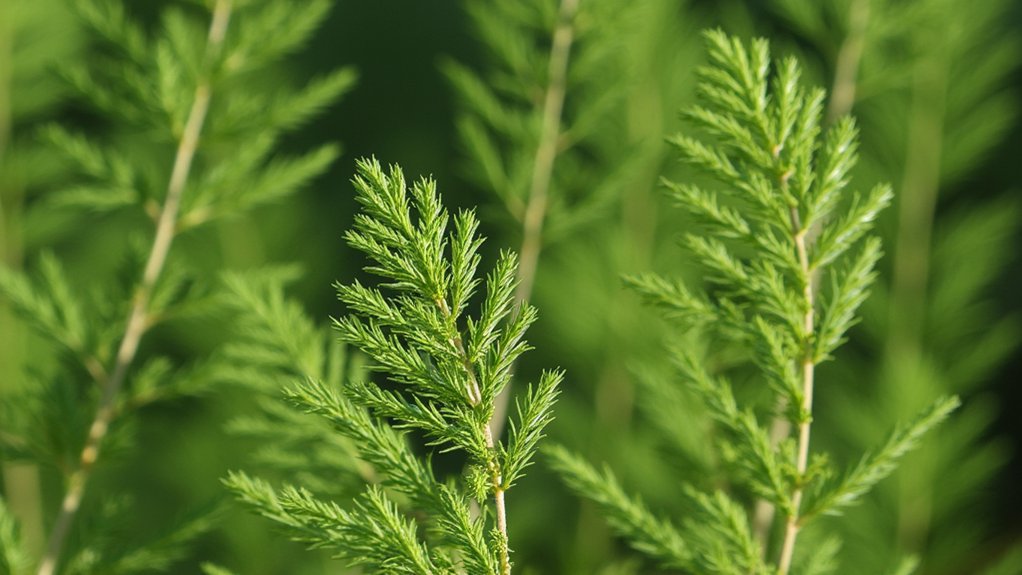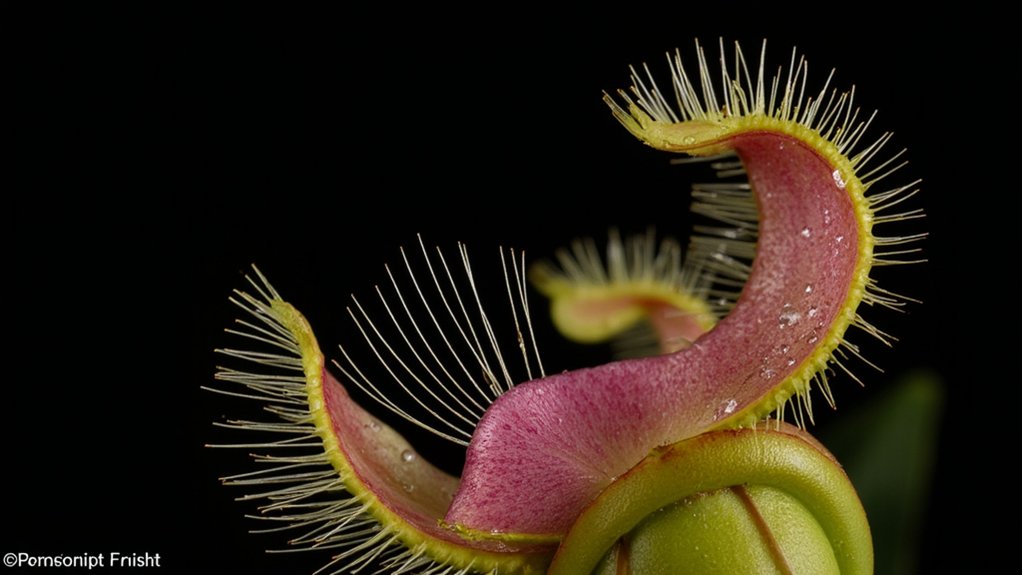You might be surprised to learn that plants can detect and respond to touch within milliseconds, faster than you can blink. While you’re familiar with the Venus flytrap’s dramatic snap, most plants perform subtler movements through a complex network of mechanosensitive cells and rapid chemical signals. These touch responses aren’t just biological curiosities – they’re vital survival mechanisms that have evolved over millions of years, and understanding them could revolutionize how we grow food.
Contents
- 1 The Science Behind Plant Touch Response
- 2 Famous Touch-Sensitive Plants in Nature
- 3 Cellular Mechanisms of Plant Movement
- 4 Evolution of Plant Touch Sensitivity
- 5 Environmental Factors Affecting Plant Touch Response
- 6 Practical Applications in Agriculture
- 7 Research Breakthroughs in Plant Mechanobiology
- 8 Common Garden Plants That React to Touch
- 9 The Role of Plant Hormones in Touch Response
- 10 Future Directions in Plant Touch Studies
The Science Behind Plant Touch Response

Although plants might seem stationary and unresponsive, they possess sophisticated cellular mechanisms that detect and react to physical contact. When you touch a plant, specialized proteins called mechanoreceptors in the cell membranes instantly recognize the pressure. These receptors trigger calcium ion channels to open, creating a rapid chemical cascade throughout the plant’s tissues.
You’ll find that this process, known as thigmomorphogenesis, can change a plant’s growth rate and direction within minutes. The plant’s cells respond by altering their water pressure and redistributing growth hormones like auxin, which explains why your houseplants may grow differently if you brush past them regularly.
Famous Touch-Sensitive Plants in Nature

While many plants exhibit subtle touch responses, certain species have evolved dramatic and visible reactions that you can easily observe. The Venus flytrap, found in North Carolina’s wetlands, snaps shut in less than one second when tiny trigger hairs are touched twice within 20 seconds.
You’ll find the sensitive plant (Mimosa pudica) reacting even faster, with its compound leaves folding inward and drooping within a fraction of a second. The telegraph plant (Codariocalyx motorius) displays an unusual response, with its small leaflets rotating in circles when touched or exposed to vibrations.
The sundew’s tentacles curl around prey in just minutes, using sticky droplets that you can see glistening in sunlight.
Cellular Mechanisms of Plant Movement

These dramatic plant movements wouldn’t be possible without sophisticated cellular machinery working behind the scenes. When you touch a sensitive plant, specialized cells called pulvini rapidly pump potassium and chloride ions across their membranes, causing water to flow out.
You’ll find these ion movements trigger a pressure change that makes the cells collapse like tiny water balloons. The process happens in milliseconds, with each cell’s volume dropping by up to 25%. This domino effect moves through the plant’s tissues, causing leaves to fold or stems to droop.
The plant later reverses this process, actively pumping the ions back to restore its original position.
Evolution of Plant Touch Sensitivity
Since plants first colonized land over 400 million years ago, touch sensitivity has evolved multiple times across different species. You’ll find this trait in plants as diverse as Venus flytraps and climbing vines, each developing unique mechanisms for responding to contact.
Through natural selection, you can see how different touch responses emerged. Some plants developed rapid movements, like the sensitive plant’s leaf-folding defense, while others evolved slower reactions, such as a vine’s ability to coil around supports.
Today’s touch-sensitive plants carry specialized genes that weren’t present in their early ancestors, showing how evolution has fine-tuned these remarkable abilities over millions of years.
Environmental Factors Affecting Plant Touch Response
A variety of environmental conditions can dramatically alter how plants respond to touch stimuli. You’ll notice that temperature plays an essential role, with most plants showing heightened sensitivity between 65-75°F (18-24°C). When temperatures drop below 50°F, their response time typically doubles.
Light intensity affects touch sensitivity too. If you’re observing plants in low-light conditions, they’ll react more slowly to mechanical stimulation. During bright daylight hours, you’ll see faster responses, particularly in species like Mimosa pudica.
Humidity and soil moisture content work together to influence touch responses. You’ll find that plants in 40-60% relative humidity demonstrate ideal touch sensitivity.
Practical Applications in Agriculture
Understanding how plants respond to touch has revolutionized modern agricultural practices. You’ll find farmers using mechanical stress techniques to produce stronger, more compact crops. By gently brushing seedlings for 30 seconds daily, you can reduce stem elongation by up to 30% and increase stalk thickness.
Wind machines and automated brush systems now help commercial growers create sturdier plants that’ll withstand harsh weather conditions. You can apply these methods in greenhouse operations too, where controlled touching triggers plants’ natural defense mechanisms. Studies show touch-stressed tomato plants develop better disease resistance and produce fruits that are 15% more firm.
Research Breakthroughs in Plant Mechanobiology
Recent breakthroughs in plant mechanobiology have transformed our knowledge of how plants process touch signals. Scientists have identified specific proteins, like MCA1 and FERONIA, that act as cellular pressure sensors, helping plants detect and respond to mechanical stimulation within 30 seconds.
You’ll find that plants don’t just react passively; they’re actively processing touch through complex calcium signaling networks. These networks can transmit information across entire plant bodies at speeds of up to 400 micrometers per second.
New imaging techniques have revealed previously invisible mechanoreceptors in plant cell walls, allowing you to understand how even the gentlest brush triggers thousands of genetic changes within minutes.
Common Garden Plants That React to Touch
Many popular garden plants demonstrate fascinating touch responses that you’ll notice during routine maintenance. The touch-me-not plant (Mimosa pudica) folds its leaves within seconds when stroked, while Venus flytraps snap shut in under 100 milliseconds after trigger hairs are touched.
You’ll find similar reactions in climbing plants like morning glories and sweet peas, which coil their tendrils around supports within 30 minutes of contact. The sensitive fern (Onoclea sensibilis) will gradually fold its fronds when touched repeatedly, and the telegraph plant (Codariocalyx motorius) shifts its leaves in response to vibration.
The Role of Plant Hormones in Touch Response
When a plant perceives touch, it triggers a cascade of hormonal changes that orchestrate its physical response. The key player you’ll find is auxin, which regulates growth and movement, while ethylene and jasmonic acid work to strengthen cell walls and activate defensive responses.
You’ll notice that within minutes of touching a plant, calcium levels spike in its cells, leading to the production of these hormones. They’ll then redirect growth, often causing stems to thicken or slow their upward extension. It’s similar to how you’d build muscle – the plant’s hormonal system helps it adapt to physical stress and become more resilient.
Future Directions in Plant Touch Studies
Building on our understanding of plant hormones, scientists are now mapping out bold new territories in plant touch research. You’ll find ongoing studies exploring plant memory, investigating whether flora can “remember” previous touch encounters and adapt their responses accordingly.
Advanced imaging technology lets you watch calcium waves move through plant tissues in real-time, while genetic mapping helps identify touch-responsive genes. Within the next decade, you’ll likely see breakthroughs in understanding how plants process mechanical stimulation.
Scientists are particularly excited about developing touch-sensitive crops that could better withstand wind damage and automated systems that optimize plant growth through precise mechanical stimulation.
